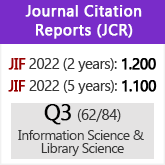Intelligent System for Detection and Guidance of users in Libraries
DOI:
https://doi.org/10.3989/redc.2013.1.916Keywords:
RFID, libraries, library services, planning, artificial intelligence, ZigbeeAbstract
Since the late nineties, Radio Frequency IDentification (RFID) manages library catalogs, loans, returns and security. RFID, with a moderate investment, improve the capabilities of both, librarian and user. This paper presents a new use for RFID to determine where a book is located and the shortest route to it in libraries with multiple levels and rooms. An application named SIGUEME (Sistema Inteligente de GUiado para Entornos Multiusuario Extensos; Intelligent System to Guide for Multiuser Extensive Environments) was implemented experimentally in the Meco’s public library (Madrid). The system allows people detection and customized guiding in the building thanks to different screen placed in strategic points. We have developed a wireless communications system based on Zigbee technology that eliminates the need of wires.
Downloads
References
Boss, R.W.(2003). RFID Technology for Libraries, American Library Association.
Edwards, S.; Fortune, M. (2008). A Guide to RFID in Libraries. Book Industry Communication, London.
Finkenzeller, K. (2010). RFID Handbook: Fundamentals and Applications in Contactless Smart Cards, Radio Frequency Identification and Near-Field Communication.(3ª ed.) United Kingdom; John Wiley & Sons Ltd, p. 462.
Gerevini, A.; Long, D. (2005). Plan Constrains and Preferences in PDDL3. The Language of the Fifth International Planning Competition. Technical Report, Department of Electronics for Automation,University of Brescia. Brescia, Italia.
Gómez-Gómez, A.; Ena-Rodríguez, B.; Priore, P. (2007). RFID en la gestión y mantenimiento de bibliotecas. El profesional de la información, vol. 16 (4), 319-328. http://dx.doi.org/10.3145/epi.2007.jul.05
Libbenga, J. (2004). Vatican library adopts RFID. http://www.theregister.co.uk/2004/07/09/vatican_library_rfid/
Martínez Olmo, M.P.; Pérez-Montes Salmerón, C. (2008). La Tecnología RFID aplicada a Bibliotecas. La experiencia de la Biblioteca Tomás Navarro Tomás. X Jornadas de Gestión de la Información, p. 75-88. Madrid, España:SEDIC
Martínez Olmo, M.P. (2009). 20.000 metros cuadrados de viaje por las ciencias humanas y sociales. Mi Biblioteca, vol. 18, 84-89.
Plaza, J.; R-Moreno, M.D.; Castaño, B.; Carbajo, M.; Moreno, A.(2008). PIPSS: Parallel Integrated Planning and Scheduling System. The 27th Annual Workshop of the UK Planning and Scheduling Special Interest Group, Edimburgo, Reino Unido.
R-Moreno, M.D.; Castaño, B.; Carbajo, M.; Moreno, A.; F-Barrero, D.; Muñoz, P. (2011). Multi-Agent Intelligent Planning Architecture for People Location and Orientation using RFID. Cybernetics and Systems, vol. 42 (1), 16-32. http://dx.doi.org/10.1080/01969722.2011.532640
Russell, S.J.; Norvig, P. (2009). Artificial Intelligence: A Modern Approach.(3ª ed.) New Jersey: Prentice Hall, Upper Saddle River, p. 1148
Singh, J.; Brar, N.; Fong, C. (2006). The state of RFID applications in libraries. Information Technology and Libraries, vol. 25, 24-32.
Smart, L. (2004). The market place; Laura Smart gives a guide to the leading providers of integrated RFID solutions. < http://www.accessmylibrary.com/article-1G1-124007734/market-place-laura-smart.html
Published
How to Cite
Issue
Section
License
Copyright (c) 2013 Consejo Superior de Investigaciones Científicas (CSIC)

This work is licensed under a Creative Commons Attribution 4.0 International License.
© CSIC. Manuscripts published in both the printed and online versions of this Journal are the property of Consejo Superior de Investigaciones Científicas, and quoting this source is a requirement for any partial or full reproduction.All contents of this electronic edition, except where otherwise noted, are distributed under a “Creative Commons Attribution 4.0 International” (CC BY 4.0) License. You may read here the basic information and the legal text of the license. The indication of the CC BY 4.0 License must be expressly stated in this way when necessary.
Self-archiving in repositories, personal webpages or similar, of any version other than the published by the Editor, is not allowed.

















